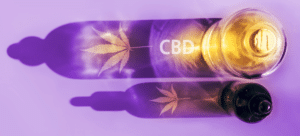
Using Medical Marijuana To Treat Diabetes Type 1 and 2
- Diabetes patients are using medical marijuana for treating diabetes type 1 and 2.
- Many diabetes patients are using medical marijuana to treat neuropathic pain and to help control blood sugar.
- Compounds found in marijuana called cannabinoids help to regulate inflammation and pain response.
- Several different medical marijuana strains and delivery methods are available to diabetes patients who hold a medical marijuana card.
Can medical marijuana help treat diabetes? Many patients who possess a medical marijuana card are finding that cannabis flower and cannabis-infused medicines available at dispensaries nationwide are quite effective at reducing the neuropathic pain that often accompanies diabetes types 1 and 2. According to medical marijuana doctors, cannabinoids found in marijuana have also been shown to help control blood sugar and possibly delay the onset of diabetes.
What is diabetes?
More than 29 million Americans are affected by Diabetes. Surprisingly, one in ten adults over 20 years of age has diabetes. And every year more than one million new cases are diagnosed. It’s estimated that about 8 million cases are currently undiagnosed.
Diabetes can be debilitating as well as life-threatening. Diabetes causes there to be too much sugar in the blood (aka, high blood sugar). Insulin helps the body metabolize sugars.
In Type 1 diabetes, the pancreas produces little or no insulin.
In Type 2 diabetes affects the way the body processes blood sugar.
There’s also a stage called prediabetes in which blood sugar is high, but not enough to be considered type 2 diabetes.
A healthy diet and exercise regimen can lessen the effects of diabetes. It can also help to delay or prevent the onset of diabetes. However, there is currently no cure for diabetes. The best diabetes patients can do is to monitor blood sugar levels and supplement with insulin when needed.
Medical marijuana will not replace insulin in the treatment of diabetes, however, it can be a strong ally in dealing with some of the symptoms of diabetes. It might also help to control blood sugar in some patients.
How does medical marijuana help treat diabetes?
The human body produces a class of chemicals called endocannabinoids as it responds to changes in various physiological systems. These chemicals interact with cannabinoid receptors on the surface of cells throughout the body. This system is known as the human endocannabinoid system or ECS. The ECS helps to regulate appetite, mood, pain, metabolism, blood flow, inflammatory response, immune response, and many other important functions.
Cannabis contains compounds called phytocannabinoids which mimic the effects of our own natural cannabinoids to some extent. The most common phytocannabinoids found in marijuana are THC and CBD. While THC has intoxicating effects, CBD does not. Marijuana also produces other less common but just as beneficial cannabinoids such as CBG and CBN as well as an additional family of active compounds known as terpenes. Cannabinoids and terpenes can also work together to provide additional benefits. This is known as the entourage effect.
Cannabinoids have been shown to help control blood sugar and metabolism and also to affect the performance of the liver. In fact, Joseph S. Alpert, M.D., editor-in-chief of the American Journal of Medicine, and author of a research paper titled, “The Impact of Marijuana Use on Glucose, Insulin, and Insulin Resistance among US Adults,” writes:
“Of the participants in our study sample, 579 were current marijuana users and 1975 were past users. In multivariable adjusted models, current marijuana use was associated with 16% lower fasting insulin levels and 17% lower HOMA-IR (insulin resistance). We found significant associations between marijuana use and smaller waist circumferences.”
Studies have also shown that cannabinoids increase nerve growth factor, which may help to relieve neuropathic pain. Cannabis’ antioxidant and anti-inflammatory properties can also help in this fight. (A list of studies can be found at the end of this article.)
Studies have also shown that cannabinoids help to reduce pain caused by diabetic neuropathy. One study showed that cannabinoids help to reduce proteins that trigger nerve damage in diabetic mice.
In another study involving 234 human subjects suffering from peripheral neuropathic pain more than half of the participants reported drastically reduced pain levels after supplementing with cannabinoids regularly for 10 months.
Diabetic retinopathy is another symptom of diabetes. It is a major cause of blindness. Research has shown that cannabinoids reduce neurotoxicity and inflammation caused by high blood sugar levels. This decreases retinal inflammation and protects blood vessels in the retina from swelling or leaking.
Depression is another common complaint among diabetics. Cannabinoids have also been shown to be effective at improving mood and easing depression.
The anti-inflammatory and antioxidant properties of cannabinoids make them effective in mitigating diabetes complications. Lab testing on mice suffering from Type I diabetes has shown that CBD, in particular, can delay inflammation associated with diabetes helping to delay the onset of Type 2.
Another study published in the American Journal of Medicine concluded that CBD use was associated with lower levels of fasting insulin and HOMA-IR in rats as well as lower body fat levels.
Medical Marijuana Products Available to Help Treat Diabetes
Diabetes patients have several options for delivering cannabinoids both locally for the treatment of neuropathic pain and systemically for benefits such as regulating blood sugar and circulation.
Smoking medical marijuana or potent derivatives such as hashish and kief are the fastest way to get cannabinoids into the bloodstream. However, smoking can injure the lungs and throat and cause conditions such as chronic bronchitis and asthma in some patients.
Vaping or dabbing cannabis concentrates is similar to smoking. They both offer fast relief from pain and depression but can damage the lungs.
Cannabis-infused edibles, when taken with food, can take up to 90 minutes to fully take effect, but the effects are long-lasting. When using edibles, it’s wise to start with very small doses and work up to an effective dosage. Overconsumption of edibles can cause unpleasant side effects such as extreme intoxication.
Tinctures and concentrates are also a very good option for diabetes patients. Tincture drops can be taken sublingually (under the tongue) for fast absorption via the capillaries in the lining of the mouth. The pre-measured dropper makes dosing easy and precise.
Keep in mind that overuse of THC can lead to unpleasant results. Microdosing with THC is an excellent option, especially for patients who are new to a medical marijuana regime.
Another option is low-THC, high-CBD products such as CBD oil produced from hemp. Anyone can buy CBD online without a medical marijuana card.
Getting a medical marijuana card for diabetes
Currently, two-thirds of U.S. states have some form of legalized marijuana. Diabetes is one of the qualifying medical conditions for obtaining a medical marijuana card in certain states. Some states permit the sale of marijuana and cannabis products to all adults 21 and older.
Each state has its own rules, so it’s imperative to be aware of all local laws, requirements, and regulations prior to obtaining a medical marijuana card or purchasing cannabis products at a dispensary.
In almost all states that offer medical marijuana cards the first step is to contact one of the marijuana doctors in your area. The healthcare provider’s staff will often walk patients through the process.
Click here to learn how to get a medical marijuana card in your state.
Conclusion
For many patients with diabetes, medical marijuana offers a natural, safe, and effective option for treating symptoms such as pain and for helping to control blood sugar. Cannabinoids are specifically known to help increase levels of nerve growth hormone and reduce neuropathic pain. The administration of medical marijuana has also been shown to target the emotional aspects of diabetes.
As medical marijuana becomes more popular for the treatment of diabetes the mechanisms by which cannabinoids help reduce pain and tame blood sugar levels should become clearer as will the ideal delivery methods and strains for treating this condition.

Sign Up for Medical Cannabis Today!
For potential patients, if you’re ready, we make it easy to connect with a medical marijuana doctor nearby or online. If you are interested in getting certified, please fill out the MMJ patient registration form below and press submit to get started. See if you qualify today!

MedCard Registration Form

Helpful Medical Marijuana Links:
Sources and additional reading
- The impact of marijuana use on glucose, insulin, and insulin resistance among US adults
- Cannabidiol arrests onset of autoimmune diabetes in NOD mice
- Diabetic retinopathy: Role of inflammation and potential therapies for anti-inflammation
- Cannabinoids alter endothelial function in the Zucker rat model of type 2 diabetes
- The endocannabinoid system in obesity and type 2 diabetes
- Cannabinoids and endocannabinoids in metabolic disorders with focus on diabetes
- The endocannabinoid system and plant-derived cannabinoids in diabetes and diabetic complications
- Cannabinoid-mediated modulation of neuropathic pain and microglial accumulation in a model of murine type I diabetic peripheral neuropathic pain

















